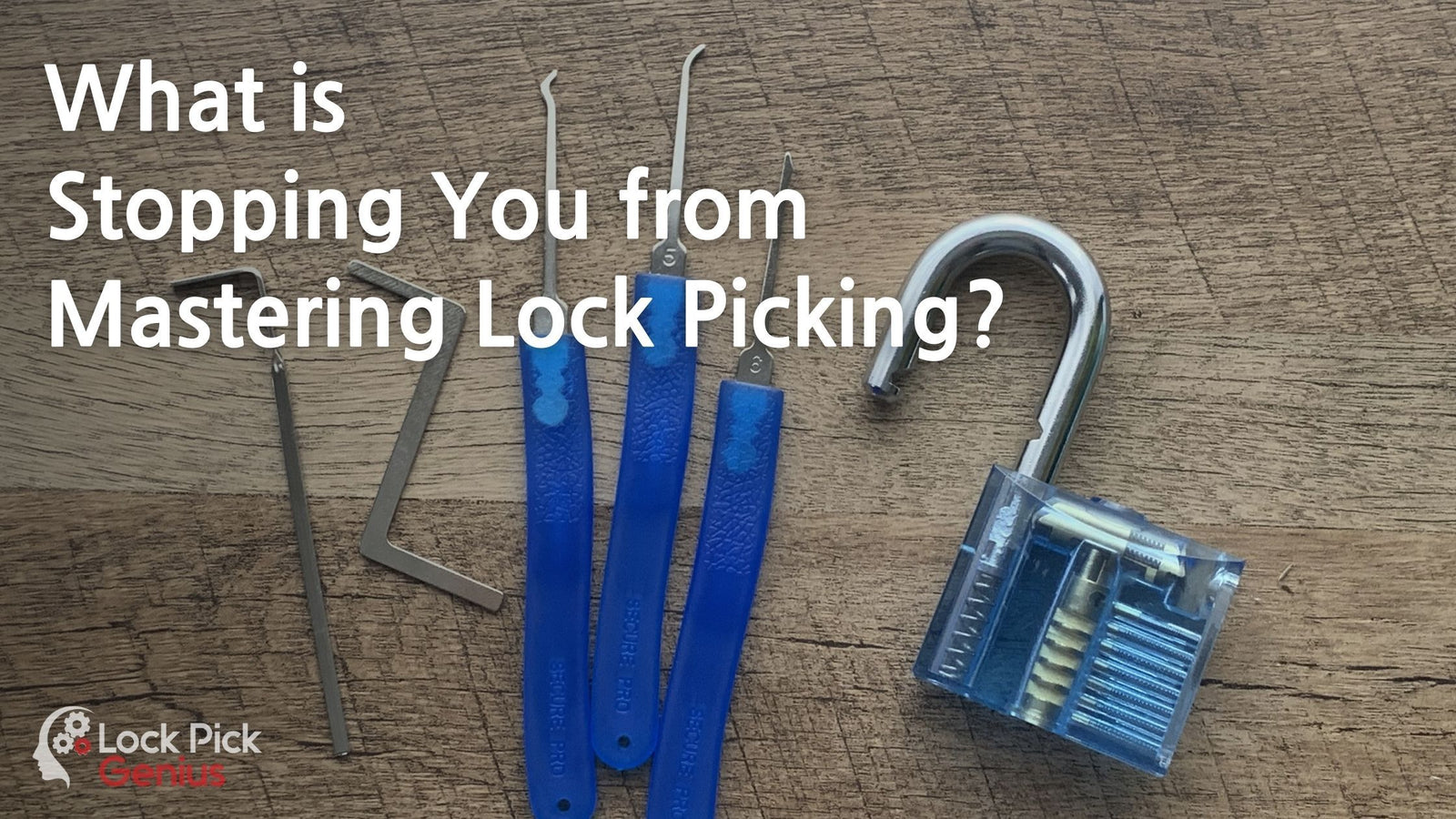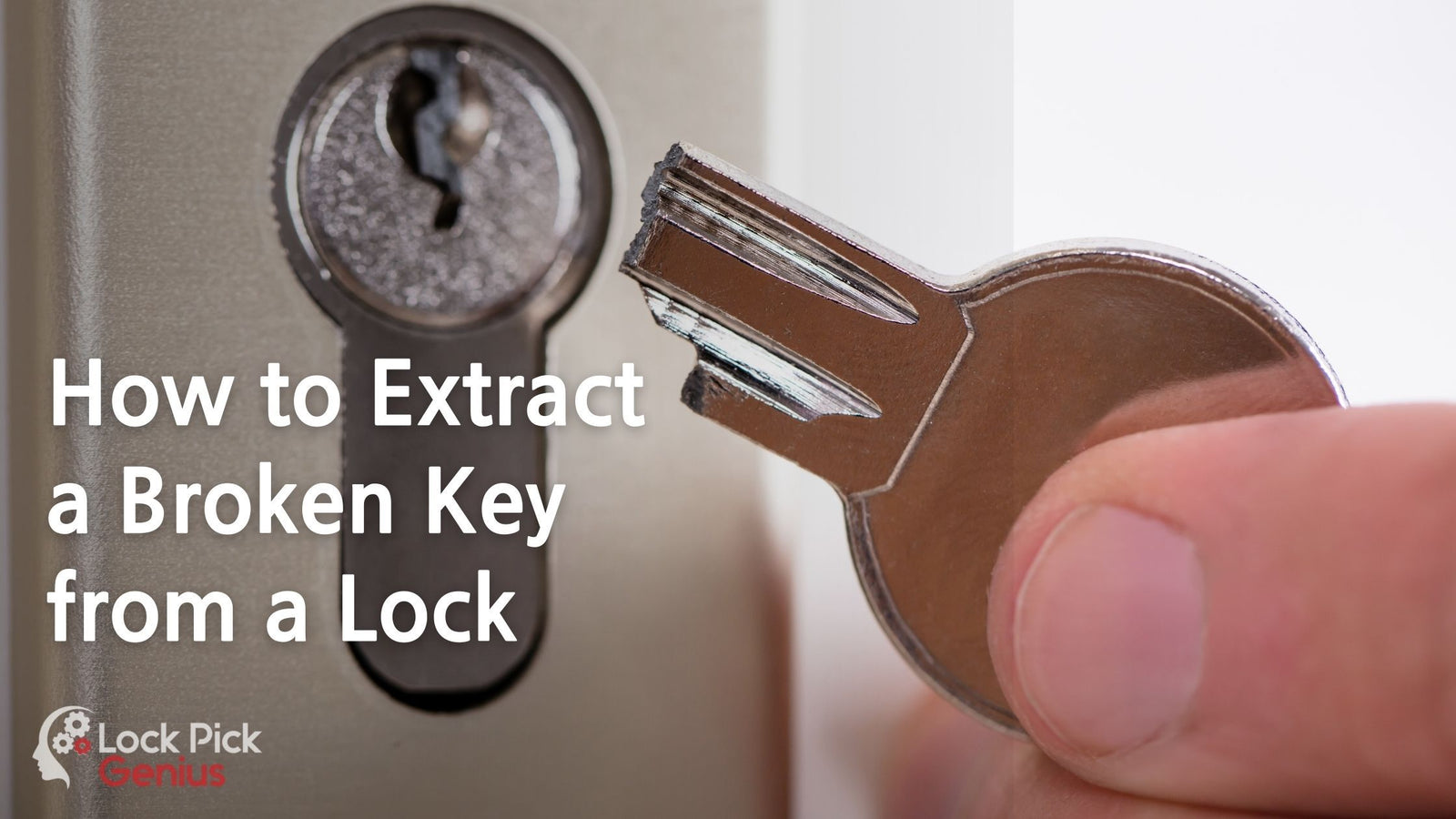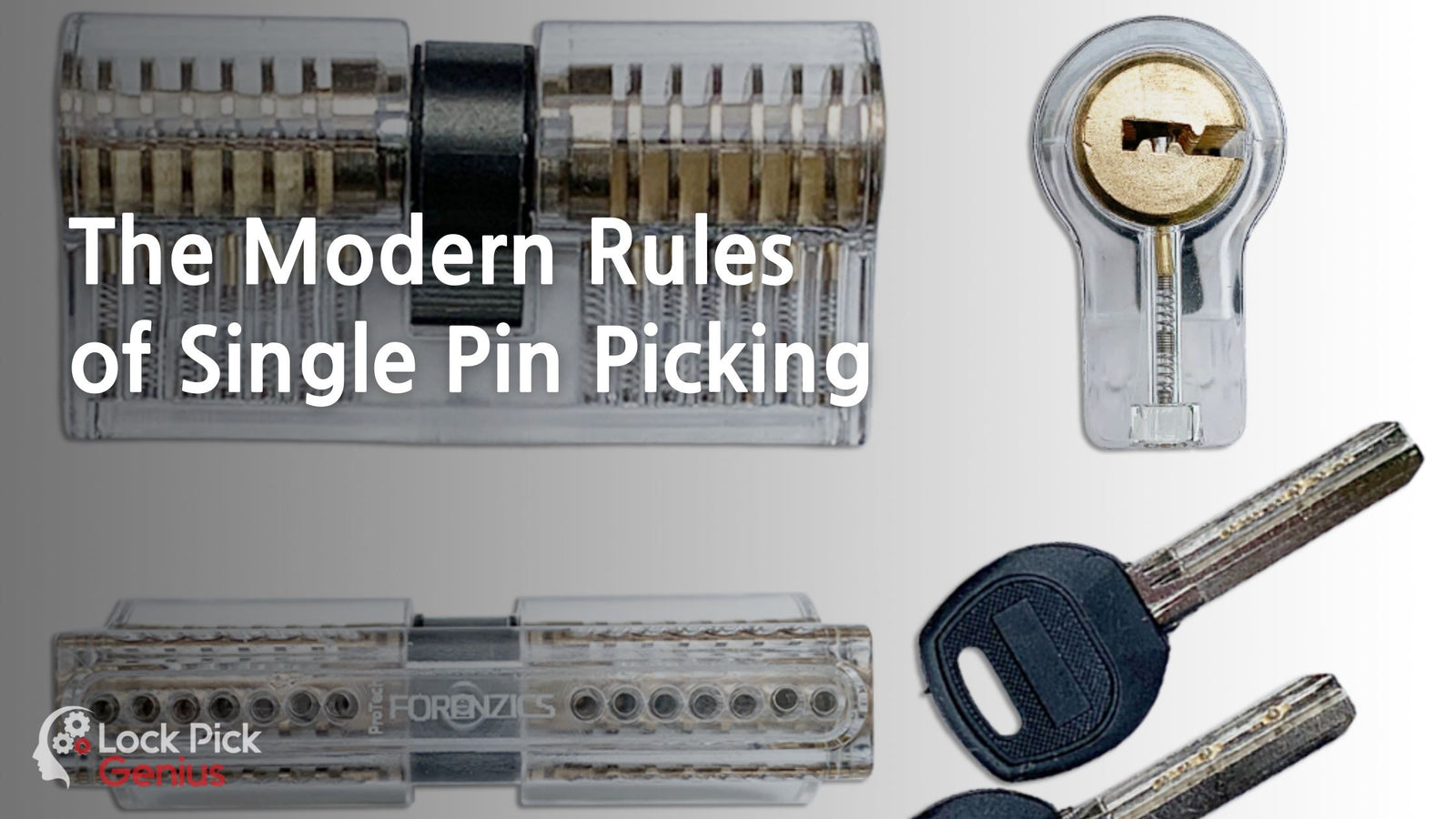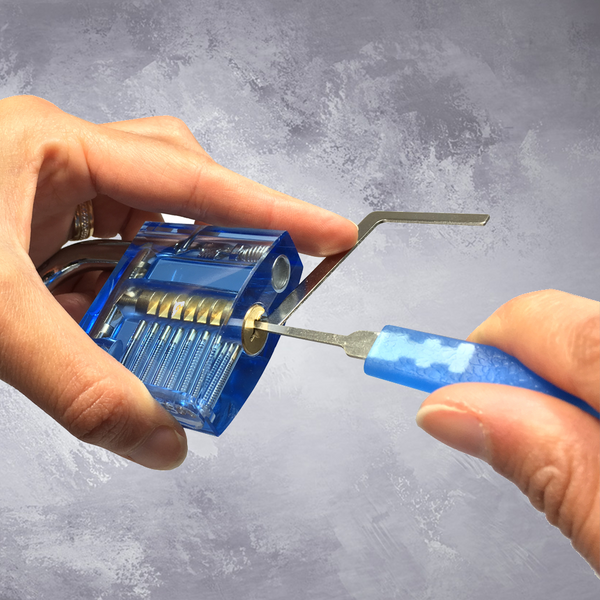Your Cart is Empty

The question that is most likely troubling you and others are can any lock be picked and what it entails mastering lock picking?
What stops people from lock picking a lock? Do they lack a useful guide, or are they confused? Whatever their reason, we are here to help you out!
Lock picking is no less of an art, and not everyone can master it. Not only is it something you can add to your skills, but it also opens you up to the different aspects of security.
You start thinking about you and your family's security from a different perspective. Many people think that lock picking for beginners is very tricky and hard to learn, which is not entirely true. While it is definitely not that easy, it's not rocket science either.
In this guide, we will cover every aspect of how to pick a lock, from the reasons behind learning it, benefits you will derive from lock picking tools required and how it actually works.
We promise you a fascinating and fun guide, so make sure you read it to the end. Doing so will help you learn how to master lockpicking!
What does lock picking mean? The simple answer is, it is a non-destructive method to open a lock without using the original key. This can be done using different ways, but the goal is the same - to use something else the same way as the original key but not the key itself.
The main thing you need to know to mimic the original key of a lock is understanding the workings of the key for opening a lock. But before we delve into this matter, you should know how a lock works.
There are a wide variety of locks used by people. However, the principle of working remains the same for almost all kinds of locks. We will pay attention to the most commonly used lock - the pin tumbler lock.
About 90% of the locks used today are pin tumbler locks, and these are the ones you will find on almost every door lock, deadbolt and padlock. These might be pretty simple but operate on a whopping 6000-year-old technology.
Many people think that mastering lock picking is a very challenging task where one should have a Zen-like focus. But that's not true.
You don't need to sit in an empty room with lots of equipment and focus on learning lock picking. You can master this skill quickly and easily by learning the basic concepts. Indeed, it requires a lot of practice, but it is equally fun to learn and apply.

Coming back to the pin tumbler locks, they are generally made up of six key components discussed below:
The cylinder is the first principal component of a pin tumbler lock. It is a small cylinder that keeps all other components. This is the part that slides into a door lock or a padlock. It makes up the upper part of the shear line. Other than the cylinder, it is also known as the body of the lock or the shell.
The Plug is situated at the bottom of the lock. But instead of shearing down the flat surface, the Plug acts as a little container that rotates within the cylinder or the housing resulting in a lock shear line.
The front part of the Plug is where the key is pushed in, and the back part contains either a tailpiece or a cam that draws back the latch and rotates to open a lock. The Plug forms the lower limit of the lock shear line.
The lock shear line is nothing but a small gap between the Plug and the cylinder. It is a conceptual line where the Plug makes rotations for opening the lock. When the lock's sheer line is blocked, both the cylinder and the Plug become locked, and the Plug doesn't rotate.
Only when the shear line is unblocked, will the Plug rotate freely and opens up the lock. The lock shear line concept is one of the most important things to understand when learning the lock picking skill.
Generally, the pin tumbler locks have two different types of pins:
Talking about the key pins, they make the lower set, and their job is to read the cuts of a key. A variety of different types and lengths of pins are used for this purpose.
If you look at a regular key, the high and low spots you find are known as the cuts. The role of the key pins is to match these cuts to mimic the key.
Similarly, the driver pins form the upper set of pins, and their job is to block the shear line. They are different from the key pins as they all are of the same length.
Lastly, some springs usually serve two functions:
Springs are the most critical components of the lock. Without them, the pins will not work and can get stuck anywhere inside the housing, making the unlocking process impossible.
Alright, now that you know about the key components of a pin tumbler lock, it's time to understand how lock picking works!

Here is how the lock picking procedure works.
Once a key is masterfully edged into the Plug, it pushes the key pins upwards. Due to the matching of key pins to the cuts, the key pins rise further and unblocks the shear line, which in turn causes the driver pins to come out of the Plug completely.
When the gap between the driver pins and the key pins becomes the same as the sheer line, the key can rotate the Plug freely to open the lock.
In simple words, the key removes all the obstructions, including the pins and the ones in the shear line.
No matter how much you try and practice, you'll never be able to create any two things that work exactly the same. Take, for instance, the task of how to pick a padlock with a hairpin.
In some way or the other, there will always be something different - perfection is tough to achieve.
The same thing applies to the locks and their key components. No two pins or the springs are the same. They vary from each other in terms of design, size and lengths.
Because of variance, two components never match each other perfectly. There is always some sort of slop between them, and due to this slop, we can pick the locks.
Specifically, for picking pin tumbler locks, the pin chamber drilling is what makes lockpicking easier.
So, this is how lock picking works for pin tumbler locks. Of course, you can't master it in one go, but with lots of practice and patience, you'll master lock picking technology.

To pick a lock successfully, you'll need good quality lock picking tools. Although the masters do it with just a safety pin or a bobby pin, it takes a lot of experience and practice to reach this level.
As a beginner and even as a professional, you need to start with a good quality toolset.
The good thing is, there are many types of toolsets available in the market. But choosing the right ones can be a bit tricky, especially when you don't have any experience.
You don't need too many tools to start learning the skill; a few basic tools will be enough to start. Even professional lock pickers use such tools from their collection of lock pick tools.
There are three main types of lock picking tools for a pin tumbler lock: hooks, tension gauge and rakes.
While there are hundreds of lockpick sets in the market, all of them fall under these categories. The only thing you have to do is find the right set for you.
So, what are you waiting for? Get your tools and start practicing with simple pin tumbler locks. You'll master lockpicking within a few days!
We hope this guide showed you how lock picking works and how you can master this technology.
Lock picking is nothing but a process of opening a lock without using the actual key. Instead, you mimic the key by using a set of lockpicking tools.
Lock picking is possible due to the manufacturing defects of the locks. It is a great hobby and a rewarding skill to pursue. And if you are confused as to whether or not it's legal, then don't worry.
Master lock picking is legal and safe as long as your intentions are not harming anyone.
Comments will be approved before showing up.


Be the first to know about lockpicking tips and upcoming sales and promos. Get a 10% discount coupon when you subscribe!

Sign up to get special offers, Tips, News and Great deals